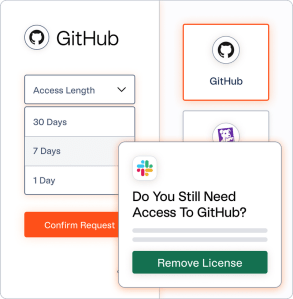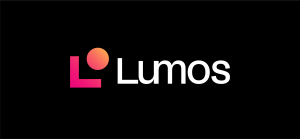Swedish startup PocketLaw — a contract automation software-as-a-service legal tech platform which is mainly focused on SMEs — has pocketed €10 million (~$11M) in Series A funding led by European VC firm, Atomico, to fuel expansion in Europe. Ben Blume, partner at the venture capital firm, is joining the board as part of the investment. The round brings the startup’s total raised since being founded back in 2018 to €14M.
PocketLaw launched its product in March 2020 — targeting contract creation, e-signing and management tools at small and medium sized enterprises across all business verticals, touting a service that requires no in-house legal experience for SMEs to tap in.
It has picked up some 6,000 customers to date — name-checking the likes of startups such as Voi, Kry/Livi, Juni and Estrid, and consumer SMEs such as Punchy Drinks, as well as some larger enterprises such as Babybjorn and Schibsted, among its client roster.
Its biggest markets are its home market of Sweden and the UK so far but it told us it expects traction to pick up in Germany and Norway later this year.
The Series A funding will go on expanding its operations across Europe, including by growing its team across legal, technical, and operational areas to support the growth sprint, it added.
“PocketLaw can be used by any business owner and any stakeholder in the world, regardless of size, financial muscle or legal experience. However, our primary priority to date has been to support all SMEs, across all business verticals, out there for clear reasons,” CEO co-founder Kira Unger tells TechCrunch. “This is a massive market with lots of companies in need of support on a daily basis and today — most of these businesses stand alone, without strong financial means and in-house experience to manage legal on their own.”
It’s been hard to miss the expanding number of legal tech startups offering tech to simplify and streamline contract creation and management for their customers in recent years. Asked about the competitive landscape, PocketLaw says it competes with the likes of Contractbook, Union Square Ventures-backed Juro and Index Ventures-backed Seedlegals.
Other legal tech players more focused at the enterprise end of the pipe include giants like DocuSign, Sirion Labs and LinkSquares.
Growth in the category is being driven by rising demand, with business budgets for legal tech projected to triple by 2025, per Garner, as we reported earlier — when we also noted that 2021 was a record year for the category, with $1.4BN invested by venture capital firms in the first half of the year according to CrunchBase data.
Given rising demand also means rising competition, we asked PocketLaw how it’s differentiating its offering vs other startups similarly chasing the SME long tail.
“PocketLaw is the first contract creation and management platform that actually empowers business stakeholders to manage legal work with confidence. As opposed to CLM [contract lifecycle management] systems, PocketLaw also offers proprietary content in the form of hundreds of jurisdiction-specific templates and guides,” suggests Unger. “This way, our users can get started from day one without advising a law firm or the in-house legal team having to spend huge amounts of time on creating and automating templates as well as making sure they are updated to make sure everything is compliant.”
“We believe that everything you do more than once should be automated. Digital first and human touch as needed,” she adds. “Our customers can easily connect with one of our partner law firms for bespoke legal advice whenever desired.”
Unger also flags rising complexity in the regulatory and legal landscape as fuelling businesses’ investment in legal services “just to survive”, as she puts it — citing a statistic that tech companies alone spend 1% of their revenues on legal services.
“That said, most day-to-day legal work consists of simple, repetitive tasks and given the cost of massive in-house legal teams, adding more people to the problem isn’t the solution. By providing automated solutions together with high-quality templates and other content developed by lawyers, PocketLaw helps every team in a company (non-legals as well as legals) to manage legal with efficiency and ease,” she argues.
PocketLaw estimates its customers save “up to fourteen working weeks and up to $200,000 in legal fees a year” by using its platform, which supports features including legal discovery, contract creation, execution and storage — as well as touting time savings of 80% vs traditional legal services.
Commenting on the Series A in a statement, Atomico’s Blume said: “This is the first time we have seen a tool really designed with the needs of business owners in mind, empowering them with access to everything they need in one place, in a world where most teams are still forced to buy multiple fragmented solutions, work in silos, or pay high legal fees to outside experts.
“Kira and Olga have built an amazing team at PocketLaw, bringing world class commercial, legal and technical experience from Slack, LinkedIn, Google, Zalando, KRY, Spotify, Acast, Mannheimer Swartling and Hogan Lovells. They are all aligned around the belief that businesses can alleviate huge burdens by making everyday legal more intuitive and efficient — lessening cost, risk, and wasted time in the process.”
The Series A also includes backing from a number of founders and operators including Personio co-founder Hanno Renner and COO Jonas Rieke; Pitch founder Christian Reber; Pleo co-founder Jeppe Rindom; Gloria Baeuerlein and the dbt Labs board member and former Gainsight COO, Allison Pickens. While existing PocketLaw investors, including Kinnevik’s Cristina Stenbeck and Susanna Campbell, also participated in the round.









